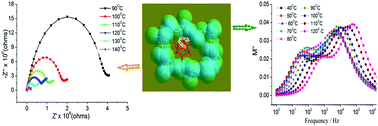Dielectric response and anhydrous proton conductivity in a chiral framework containing a non-polar molecular rotor†
Abstract
Herein, we report a chiral 3D framework with the formula [Co(HPO3)2][H2DABCO] (DABCO = 1,4-diazabicyclo[2.2.2]octane). This compound exhibits two distinct dielectric anomalies, one attributed to the transfer of protons between non-polar DABCO and the inorganic framework, and the other to the in-plane oscillatory fluctuation of the DABCO molecule. It also exhibits proton conductivity under high-temperature anhydrous conditions.


 Please wait while we load your content...
Please wait while we load your content...